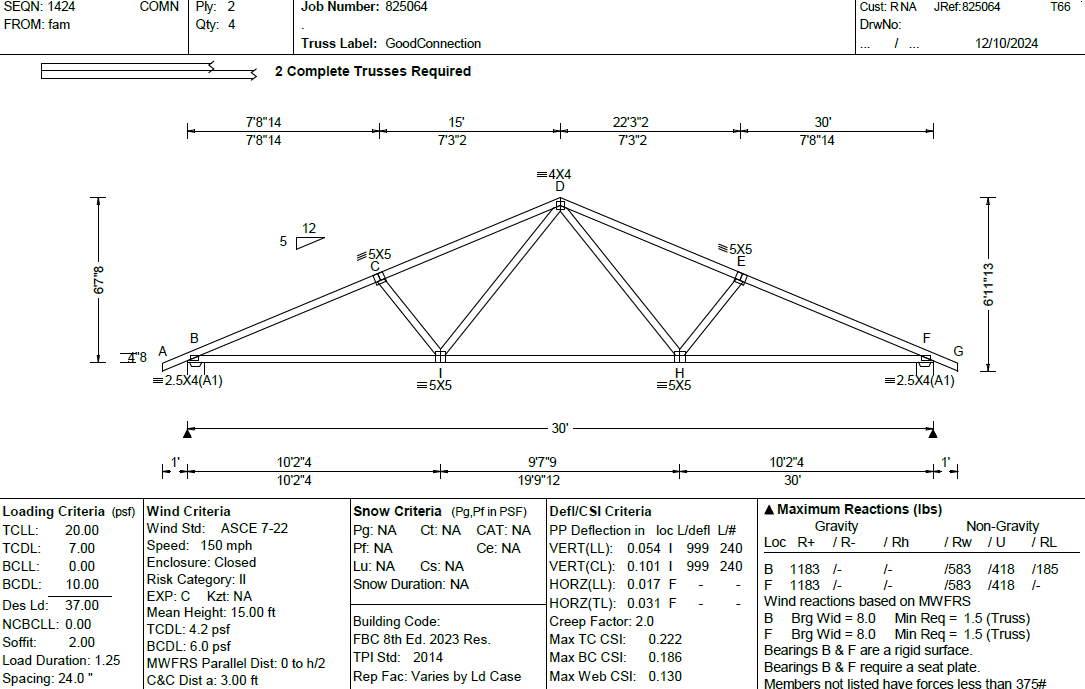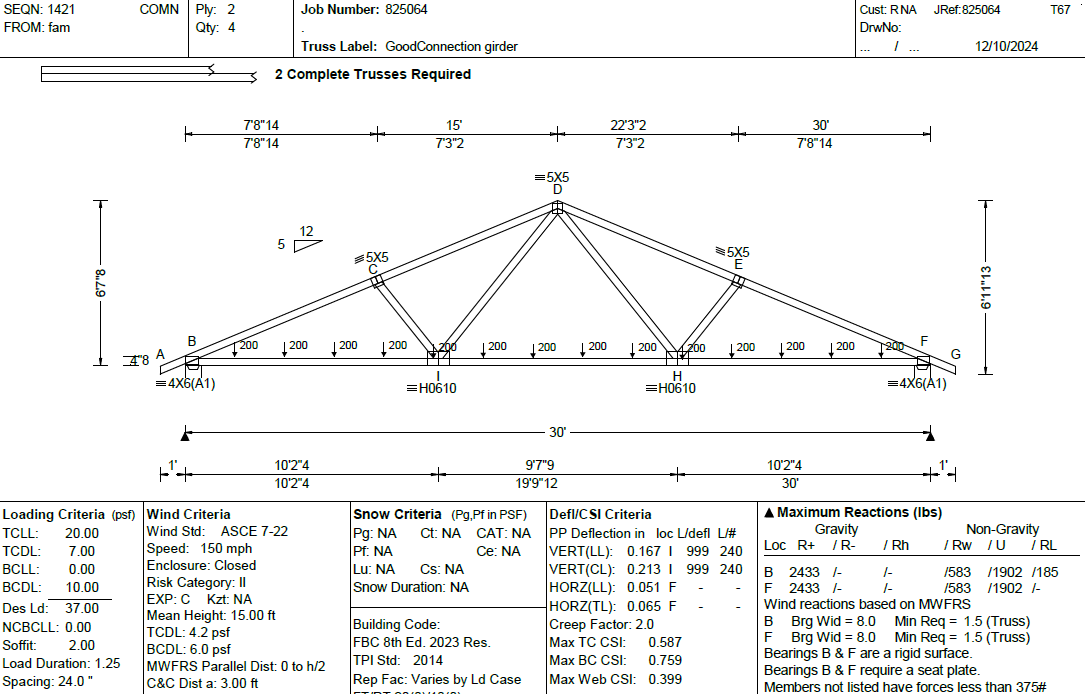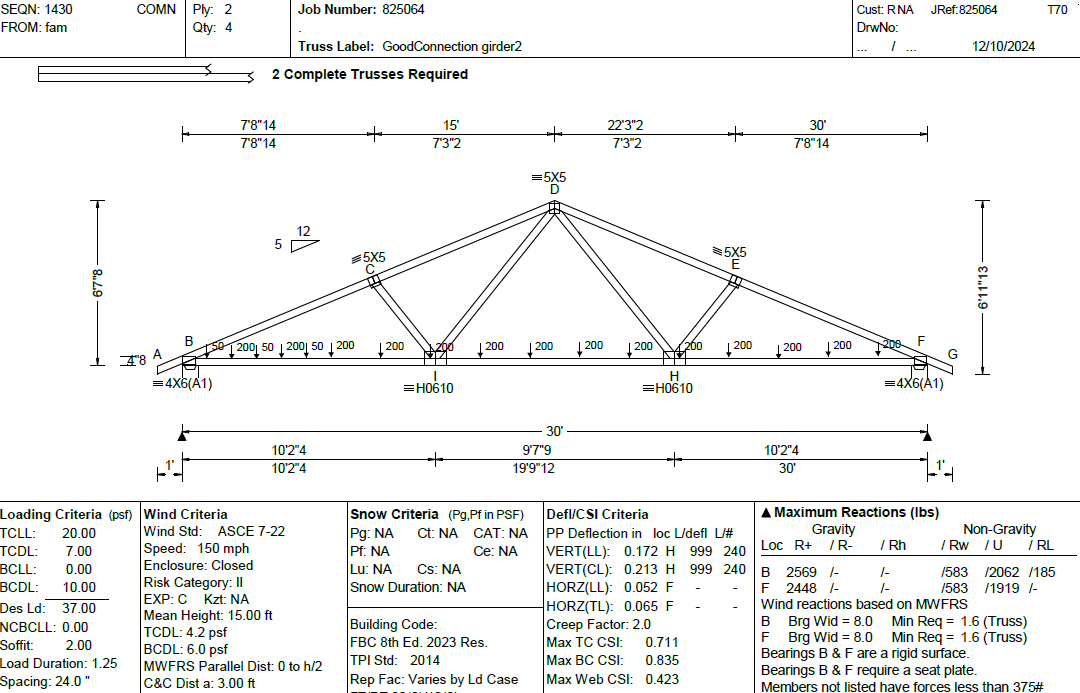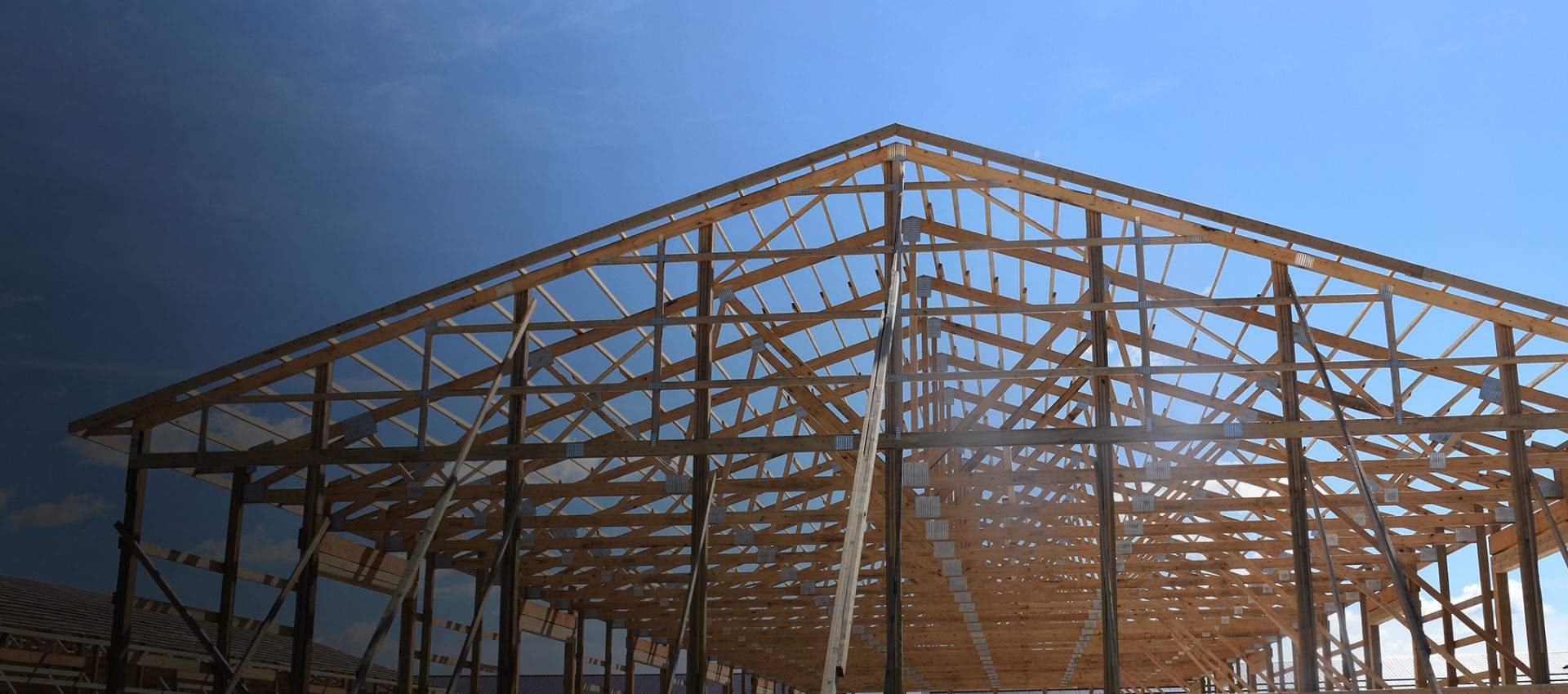Building engineers rely on maximum gravity reactions (R+) from Truss Design Drawings (TDD) to design structural components. These maximum reactions are calculated based on load combinations specified by building codes, representing the highest downward forces which allow engineers to determine the stability requirements for the structure. The ‘R+’ values are essential in determining the size and capacity of columns, lintels, dowels, foundations, as well as other structural elements.

Standard Trusses
The standard loading of a 32-foot roof truss, as illustrated in Figure 1, is 20-7-0-10 with 24” spacing (see the Loading Criteria section). The IntelliVIEW® Software calculates and displays the maximum reactions of each bearing as 1,183 lbs with a total of 2,366 lbs.
This result can be manually verified using the following formula:
Reactions=(TCLL + TCDL + BCLL + BCDL) × truss span × truss spacing
Equation with values: (20 + 7 + 0 + 10)psf × 32ft × 2ft = 2,368 lbs

Girder Trusses
Unlike standard trusses, a girder truss supports concentrated loads from other trusses or structural framing, making it an essential element in a building’s design. These require stronger structural components to meet the higher load-carrying demands.
The hand calculation for a girder truss follows the same basic formula as standard trusses but includes concentrated loads. For instance, in Figure 2, the girder truss carries fourteen 200 lbs point loads at the bottom chord. The reaction can be calculated as follows:
(20 + 7)psf × 32ft × 2ft + (0 + 10)psf × 32ft × 1ft + 14 × 200lbs = 4,848 lbs
The blue font is the top chord calculation, while the green font is the bottom chord calculation. The result is close to the TDD value of 4,866 lbs, confirming the accuracy of the calculations
Figure 3 examines a situation where point loads are applied to both faces of a truss. Specifically, three 50 lbs point loads are placed on one face, while fourteen 200 lbs point loads are attached to the other face. The reaction is calculated as:
(20 + 7)psf x 32 ft x 2 ft + 14 x 200 lbs + 3 x 50lbs + 10 psf x (32-6) ft x 1 ft = 4,938 lbs
While the top chord loading (blue) remains unchanged, the bottom chord loading (green) must account for the distribution on both faces.

For the face with fourteen 200 lbs point loads, the calculation remains as before. For the opposite face with three 50 lbs point loads, the remaining tributary area is calculated as: 10 psf × (32 – 6) ft × 1 ft
Here, the 32 ft is the total truss span, while the unoccupied area accounts for the spacing of the point loads: 32 ft – (3 trusses × 2 ft) . The calculated result of 4,938 lbs closely aligns with the TDD reaction value as well.
Typically, the maximum reactions shown on the TDD surpass the hand calculated values because IntelliVIEW Software considers all loading cases per code, displaying the highest reactions. If the TDD maximum reactions are lower than the hand calculations by more than 15 percent, truss designers should review the loadings on the truss. This discrepancy is often due to missing or underestimated loads on the girder truss. By understanding and verifying maximum gravity reactions (R+), engineers can help ensure accurate, safe, and efficient structural components.
Reference(s):
- Important check points for a truss design drawing. Good-Connections®, Yoonhwak Kim, PE, Winter 2021
- ASCE7-22 Minimum Design Loads and Associated Criteria for Buildings and other Structures
- IntelliVIEW® Suite: The software solution for Component Manufacturers (alpineitw.com)

